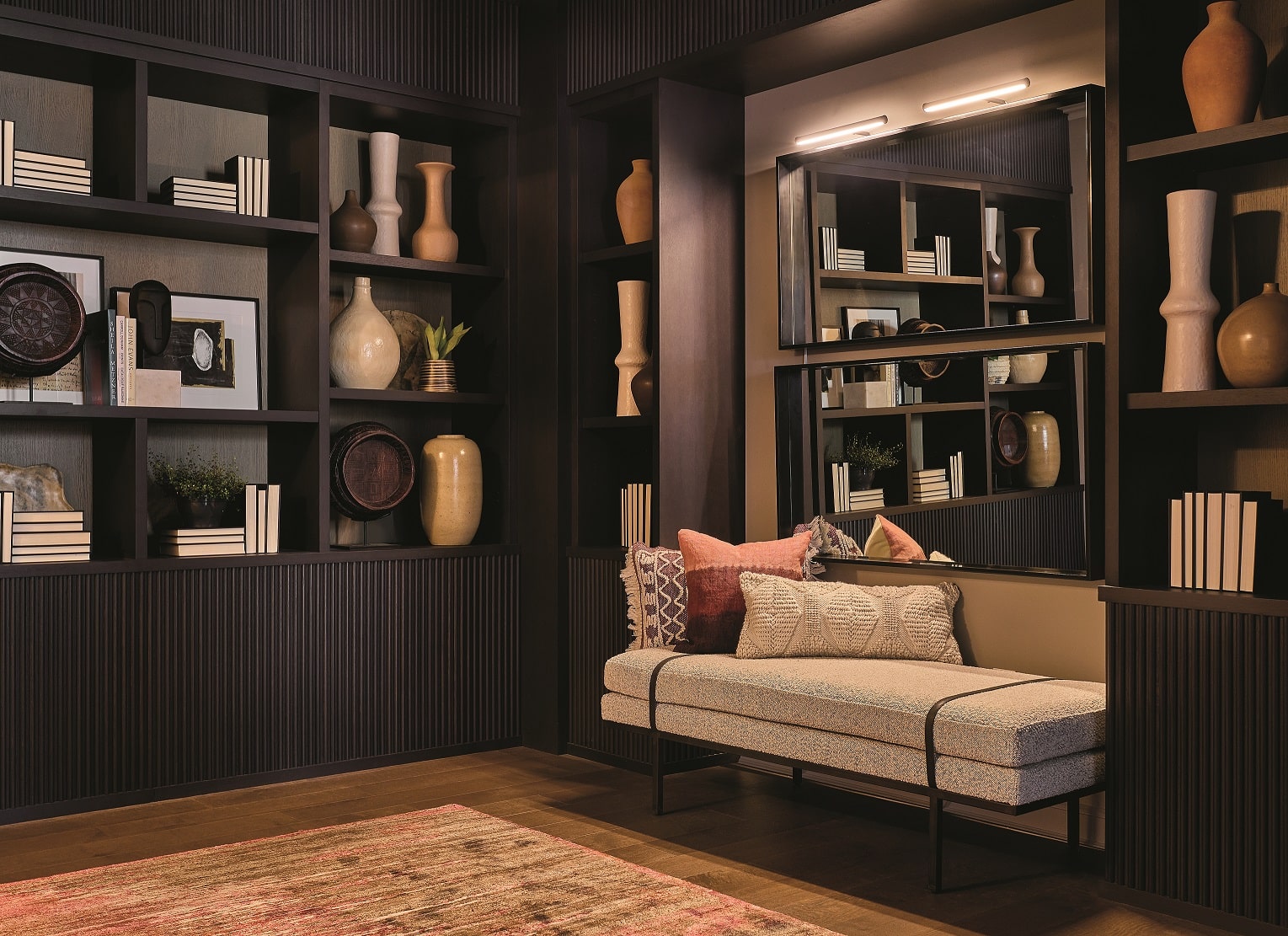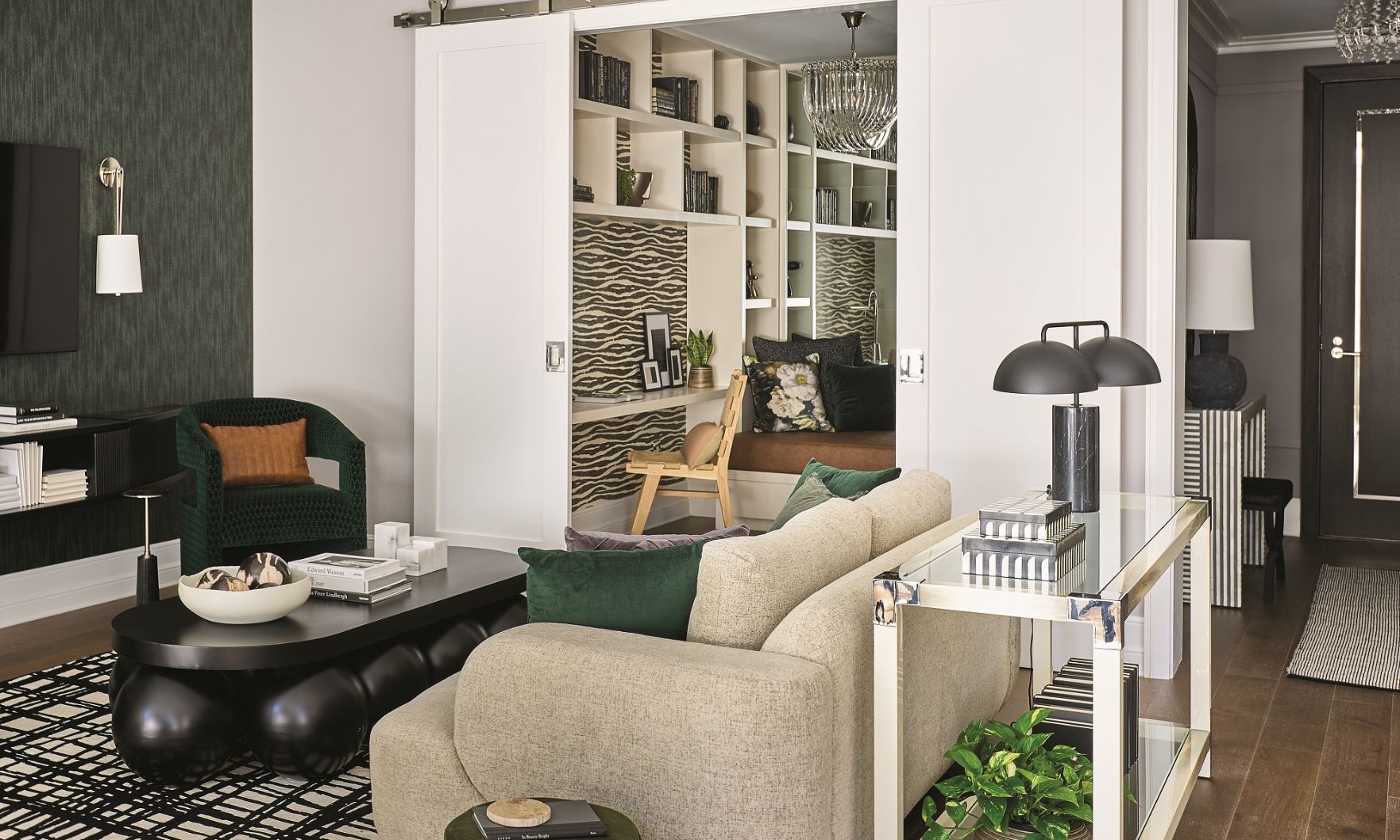It’s common knowledge in real estate that furnished, well-designed spaces show — and sell — better than empty ones. That certainly holds true for new-construction communities, where a sales model can be the deciding factor in helping brokers and developers/builders close the deal. But whether it’s for a downtown condo high-rise or a suburban single-family or town home community, a sales model needs to do much more than simply reflect popular design trends or showcase name-brand furniture and decor.
As a commercial interior design firm with decades of experience working with builders and developers to market and successfully differentiate their product, we have a proven track record of creating sales models that resonate with buyers — even in the most challenging real estate landscape. In fact, it’s more imperative to have strategically designed model homes in today’s cooled-off real estate market than during the frenzied days of 2021 and early 2022 — when it wasn’t unheard of for people to buy homes sight unseen. Now, a well-designed model can help compensate for higher interest rates by demonstrating to buyers how it will not only fit their post-pandemic lifestyle, but also help answer the question, “How can I live better?”
Communicating value to buyers at every price point
I’ve always said good design should never be about spending the most money. This adage especially holds true today, when high interest rates, inflation and supply chain disruptions are driving up costs. As such, builders and brokers need to communicate value when presenting new-construction products — at any price point. This, however, should not come at the expense of pleasing, functional design.
One way we’re seeing this play out in our work with homebuilder and developer clients is a trend toward offering pre-selected design packages for finish choices — from cabinets and countertops to appliances and flooring — which streamlines costs by minimizing customizations and upgrades. Not only do we collaborate with our clients to curate these packages, but we also feature them in our sales models — demonstrating how the elements of the finish package work together, while also showing how they can be interpreted in a unique design for the space. Rather than displaying lots of extra bells and whistles that will ultimately inflate the cost of the home, the model should strike a balance between high design and attainability as it provides inspiration to the prospective buyer.

Tribune Tower Residences
Showcasing functionality and flexibility
Due to lifestyle changes coming out of the pandemic, today’s homebuyers are demanding more from their homes, with a special emphasis on functionality. Likewise, with affordability top of mind for many, buyers are scrutinizing every square foot of space with an eye for how they can maximize it. That’s making it especially important for sales models to demonstrate flexibility, adaptability and privacy across floor plans of all sizes.
In designing sales models, we spend a great deal of time strategically showcasing a floor plan’s multifunctionality to accommodate everything from family gathering areas and homework stations to dual workspaces and room for overnight guests — while also being mindful of privacy and noise. We’re highlighting the functionality of features like pocket spaces and other nooks that have flexibility to pull double duty for multiple uses, and focusing on showing design “solutions.”
One example of this is the five sales models our team created for the Tribune Tower Residences — the adaptive reuse of Chicago’s landmark Tribune Tower from former newspaper offices to 162 luxury residences. We approached the models as an opportunity to spur sales by showing potential buyers how to get the most from the historic building’s various floor plans. Buyers can step into each model and see not only aesthetically beautiful rooms, but also actionable ideas for making the spaces function best for their lifestyle — everything from how to display a TV or art collection to the best arrangement for hosting a dinner party or an overnight guest. Tribune Tower Residences opened in the midst of the pandemic, so flexibility and adaptability were top of mind. In one model, we added a contemporary-style sliding barn door to subdivide the condo’s home library/office from the rest of the living space.
Using psychographics to show buyers how to live better
In addition to demonstrating value and functionality, effective models are informed by what we know about the individuals who will ultimately inhabit the space. Our firm’s design approach goes beyond potential buyers’ demographics to also consider the end users’ “psychographics” — their values, attitudes, interests, lifestyles and aspirations. Models are a much more powerful sales tool when they present deliberate, specific and consistent psychographic choices that will help buyers envision themselves living there.
Another example from Tribune Tower Residences is a model our team created based on psychographic insights that travel is a priority for many of the building’s prospective buyers. Envisioning a hypothetical professional couple in their mid to late 40s who were avid travelers, our team designed the model with built-in display walls as an impactful way to showcase a collection of art and artifacts from around the world. The psychographic-informed design makes the home feel like it is inhabited by real, relatable people — and reflects an aspirational lifestyle that will resonate with prospective buyers.
Even if a sales model presents buyers with a practical floor plan and an attractive value proposition, using psychographics to design a home can tap into the emotional aspect of homebuying to evoke a positive visceral feeling — that “aha! moment.”
The current market is driven by so many factors, from financial considerations to all the roles we ask our homes to fill — office, school, fitness center, gathering place, restful sanctuary and more. Given all we’ve learned over the past three years of post-pandemic life, a successful model needs more than simple aesthetics, furnishing choices or the latest finish trends to resonate with buyers. To be the most effective sales tool, today’s models must be thoughtfully designed with value, functionality and buyer psychographics in mind.
Mary Cook is the founder and president of Mary Cook Associates, a fully integrated interior architecture and design firm nationally known for creating innovative interiors for leading owners and developers of real estate.

